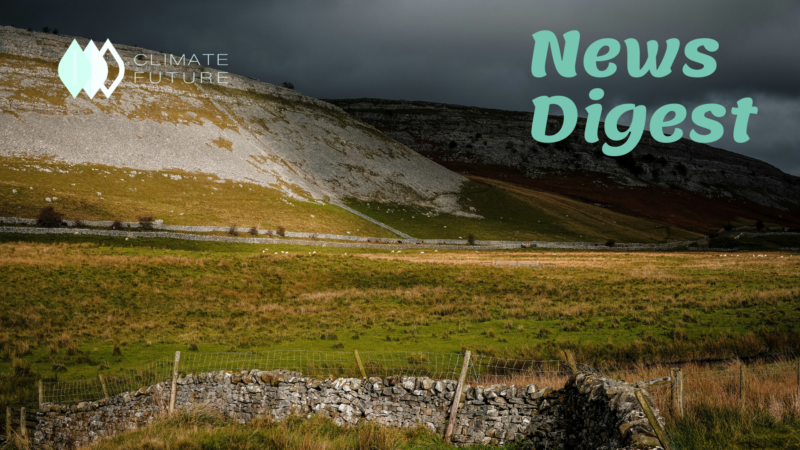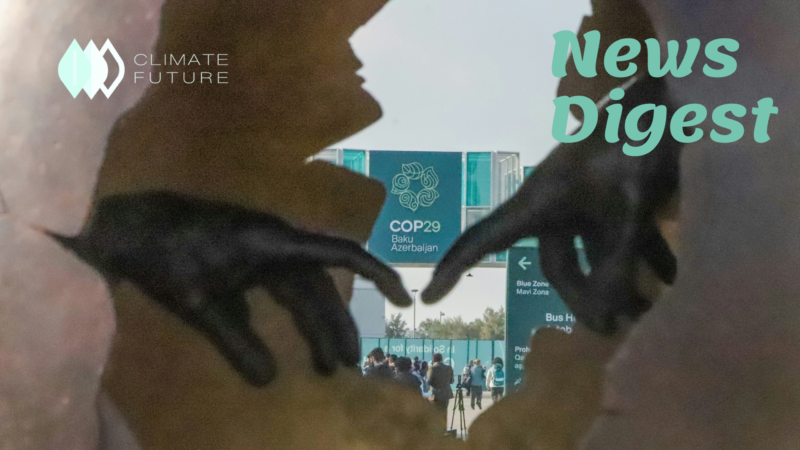Climate change: For 25th year in a row, Greenland ice sheet shrinks
According to the climate report from the UN weather agency WMO’s annual State which is a part of the Danish Arctic monitoring service Polar Portal, the weather was cold and wet in the early summer. Unusual heavy and late snowfall happened in June which led to the onset of the melting season. Later, a heatwave at the end of July caused a considerable loss of ice. Regarding total mass balance, the ice sheet lost around 166 billion ton which ended in August 2021 in the 12-month period. These numbers show the season finished with an ice sheet having a net surface mass balance of around 396 billion ton which is the 28th lowest level listed in the 41-year time. Polar Report shows how perspectives have changed because of rapidly advanced climate change although this could be recognized as an average year. It also describes the cause of the early summer chill because of the situation over southwest Canada and the northwest United States. The year 2021 is a alarming year for many reasons such as the 25th year of the Greenland ice sheet lost and the precipitation at Summit Station which is situated at an altitude of 3200 meters above sea level at the top of the ice sheet.
Global heating continued unabated with extreme weather rife and greenhouse gases hitting new highs
The previous seven years marked the world’s hottest in history with the first analysis of global temperature in 2021 which was 1.2C above pre-industrial levels. The European climate agency Copernicus assessment of the year found carbon dioxide in the atmosphere affected record levels and the potent greenhouse gas methane swelled very substantially. The increase in greenhouse gas concentration means more heat is being trapped than ever before. But, 2021 marked as the fifth hottest year on record. The climate crisis remained unabated with excessive weather striking across the world. Europe experienced its hottest summer on record and impoverished its maximum temperature record in Sicily with 48.8C. Severe floods caused nine times more likely by global heating in Germany and Belgium. Extreme heat led to the “mother of all heatwaves” in Canada and the west of the US. China meteorological agency announced that the year 2021 was the hottest on record and the northern region had its wettest with severe weather widespread. In 2021, the average CO2 levels marked a new record of 414 parts per million in 2021. The rate of CO2 rise remained unchanged as it had since 2010 although there were lockdowns due to COVID-19 pandemic.
These are the climate change trends to look out for in 2022
It is predicted that climate issues will be the top priority in 2022 such as cutting emissions and paying for climate loss and damage. In 2030, projections show that global emissions will be approximately twice as high as required to limit warming to 1.5C. Bot COP15 and COP27 will be critical turning points to face the triple planetary crisis of pollution, biodiversity loss and climate change. The pressure will grow for more ambitious action this year to fight global warming on the ground from phasing out fossil fuel subsidies to solving the surging costs of loss and damage caused by climate change impacts. Government officials agreed at the COP26 UN climate summit to find out ways to strengthen the climate action plan this year. Governments need to push ahead on buying their reserved fossil fuels at home and in developing countries after agreeing at COP26 to end. Since both developing and developed countries are under pressure to cut emissions from fossil fuels to change to cleaner energy sources, the concern about the employment of workers who depend on high-carbon industries is also growing. It is crucial to protect natural systems such as forests and biodiversity with the aim to fight against the climate crisis.
How researchers can help fight climate change in 2022 and beyond
COP26 energized the effort globally to end global warming. Now research is critical for monitoring processes and creating solutions. Late last year, the COP26 in Glasgow, UK introduced the required momentum into the political and business community to involve in fighting against climate change. The year ahead defines an opportunity for scientists to show up expertise and make sure that their voices are heard in this monumental effort. Science is already included in the UN’s formal climate agenda for 2022. Innovation is at the top of governments’ climate agenda. Exciting technologies such as solar and wind power will help to reduce emissions. However, if green energy is used to take out fossil fuels and meet the rising demand for reliable power in low-income countries, engineers and scientists will need to make a solution to these problems. More innovations will be required to enable countries to maintain their climate commitments. Climate science is essential in supporting governments and the public to comprehend the impact of climate change.
Six hot topics for climate change and nature policy in 2022
There will be growing pressure in 2022 to implement more ambitious action to fight against global warming and climate crisis on the ground. The urgency comes from the Paris Agreement target of limiting global warming to 1.5 degrees Celsius (2.7F) which is growing harder to reach although it has strong political backing in 2021. Some of the nature and climate issues experts predict that some issues will be top priorities in 2022. These are Faster, bigger emissions cuts, Phasing out fossil fuel ending, Just transition, Accelerating climate change impacts, Paying for climate loss and damage and New deal for nature. Efforts need to be doubled especially the major greenhouse gas emitters to reduce carbon pollution to stick to 1.5C with the aim to minimize climate-change effects to people and the planet. Key countries such as China, Japan and South Korea have financed polluting energy technology outside their borders. Governments are finding ways to retrain for green jobs and fund to start new business in the previous coal or oil hubs. With social and economic inequalities, poor people suffer the most from climate change. The loss and damage got the main recognition at the COP26 summit as countries agreed to finance to prevent and repair harm from ecosystem and cultural loss. It is important to protect the ecosystem to fight the climate crisis.



